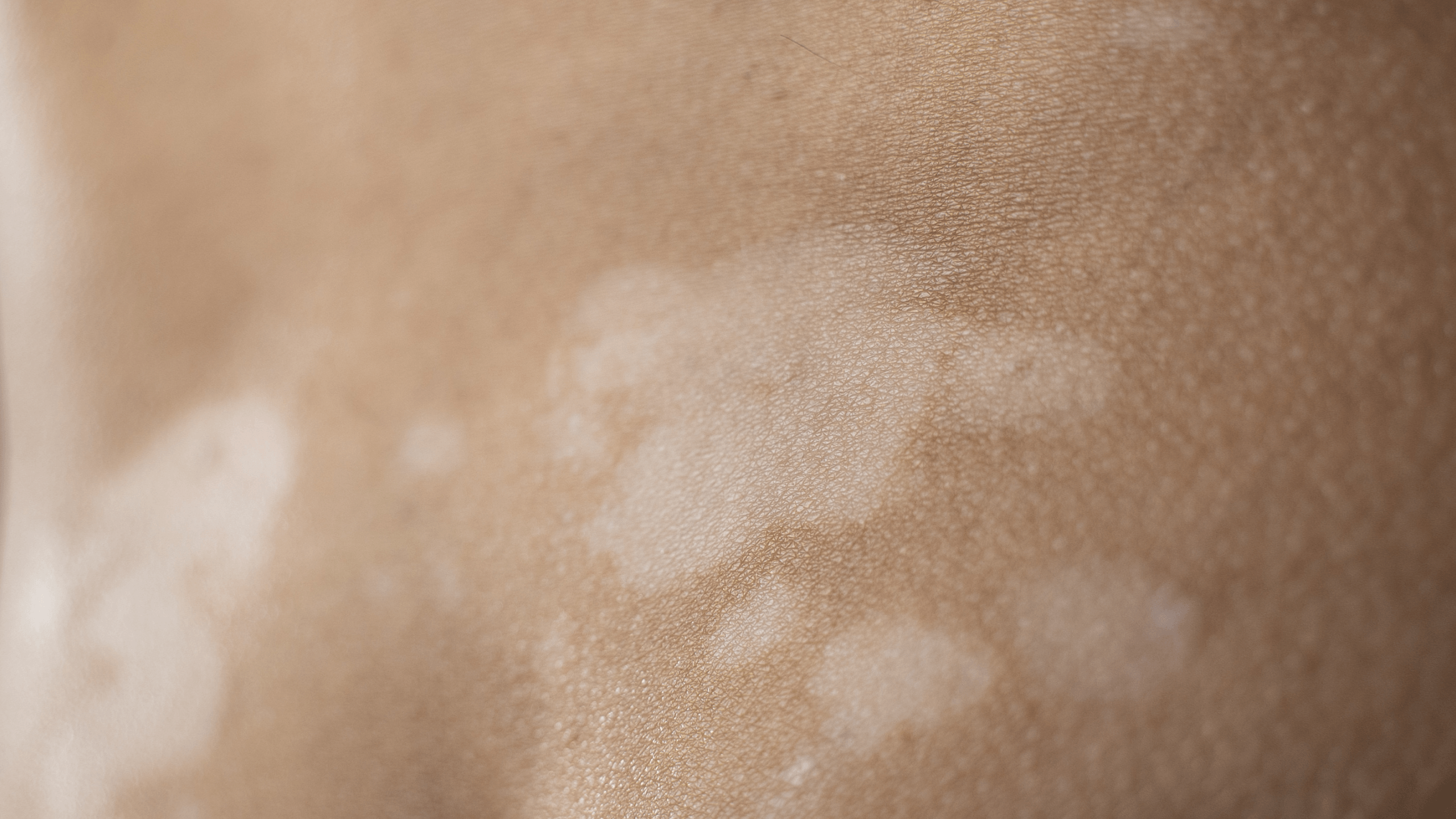Have you ever noticed that your eczema has created patches of skin that are darker—or lighter—than your usual skin tone? Depending on how much melanin you have, your eczema can appear purple, brown, gray, red, or pink. And the skin around it can be impacted too: scratching and lichenification (that’s when the skin thickens because of chronic irritation) can cause eczema skin discoloration. While changes to skin pigment can occur in all skin types, it’s most common and most noticeable in skin of color.
Here’s what you need to know about the ways eczema can impact your pigment-–and how reducing itch and inflammation can help minimize discoloration.
Hyperpigmentation
Hyperpigmentation causes patches of skin that are darker than a person’s typical skin tone. These dark spots from eczema can appear on anyone, but they tend to be more visible on people with darker skin.
As for why it happens: when you experience an eczema flare-up, your body releases cytokines. These can trigger inflammation in your body’s effort to protect itself. The cytokines also cause a release of melanin-producing cells called melanocytes. Melanocytes create more skin pigment, which travels to the top layer of the skin. When you scratch, that pigment is released.
Chronic eczema can also lead to lichenification—thickened, leathery patches of skin that occur in response to scratching and inflammation. Lichenified skin is hyperpigmented: it can appear gray on darker skin tones and dark pink on light skin tones.
Hypopigmentation
Hypopigmentation is the opposite of hyperpigmentation. It refers to a loss of color and creates patches of skin that are lighter than your usual skin tone. It occurs most frequently when an eczema flare-up is healing. Pityriasis alba, a common, non-severe skin condition that’s associated with eczema, also causes hyperpigmentation, showing up as round patches on the face, neck, shoulders, or upper arms. Pityriasis alba occurs frequently after sun exposure. It is more pronounced in skin of color.
What is Post-Inflammatory Hyperpigmentation?
Hyperpigmentation can last for months, even years, after eczema has been successfully treated. This persistent discoloration is called post-inflammatory hyperpigmentation. It is most common in people with darker skin tones, but can happen to anyone.
Using a hypoallergenic moisturizer and adequate sun protection can prevent post-inflammatory hyperpigmentation from worsening. Sun exposure can stimulate post-inflammatory hyperpigmentation, so it’s crucial to use sunscreen.
Treatment for Eczema Discoloration
Post-inflammatory hyperpigmentation, whether it’s from eczema or another skin condition, is treatable, but it may take time to see results. Tretinoin, tyrosinase inhibitors, lasers, and chemical peels are all possible treatments. Non-prescription, at-home treatment options include products with tyrosinase inhibitors such azelaic acid, kojic acid, tranexemic acid, and alpha arbutin, and/or products with gentle alpha hydroxy acids (mandelic or lactic acid).
Talk to your dermatologist about strategies for treating eczema discoloration. Some of these treatments can be irritating to eczema-prone skin, so it’s important to work with your doctor to find the best option for you.
Hypopigmentation can be difficult to treat and may resolve with time. Daily sun protection is crucial for both hypopigmentation and hyperpigmentation.
Managing Eczema Symptoms with Gladskin Eczema Cream
Looking for a new type of eczema cream? Gladskin Eczema Cream with Micreobalance® is steroid-free and clinically proven to reduce eczema symptoms–and it rebalances the skin microbiome while moisturizing.
